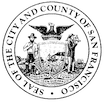Open Source Voting System Project Recommendations
(Approved by OSVTAC on March 14, 2019.)
Last posted: June 9, 2019
-
Introduction & Table of Contents (for multi-page version)
-
Single-page version (long, can be used for printing)

This work is licensed under a
Creative
Commons Attribution-ShareAlike 4.0 International License.
For copyright and attribution information for this work, see
this section. The source files for the text can be found on
GitHub here.
2. Goals
This section discusses the goals, scope, and priorities of this document and the Committee.
The TAC’s Bylaws say that the TAC’s purpose is to “provide technical guidance, ideas, and support to the Elections Commission on ways to improve and help ensure the success of the City and County of San Francisco’s open source voting system project.” The focus of TAC’s effort will be on establishing parameters and recommendations to guide the future development of the voting system.
The TAC will draw on its technical expertise, the expertise of other members in the community, and from similar efforts (including other open source voting efforts) to provide guidance in areas including but not limited to open source, requirements-gathering, design, architecture, development, documentation, security, testing, certification, manufacturing, deployment, system maintenance, strategies for procurement, and project management.
2.1. Scope
-
This document will limit itself to current laws that San Francisco must satisfy, or to changes in law that San Francisco anticipates (e.g. possibly transitioning to the “vote center” model allowed by SB 450 of 2015-2016). In particular, the document will restrict itself to considering paper-ballot systems.
-
For the purposes of this document, “voting system” includes anything that is currently the responsibility of the voting system in use today. Responsibilities of a voting system include allowing voters to mark ballots (if not using pen and paper), counting ballots, reporting election results, and ensuring the integrity of the process. In addition, it may include ballot design and layout, as well as the functionality of a “remote accessible vote by mail system” as described in AB 2252 (2015-2016). It should also facilitate auditing the results of an election. The responsibilities of a voting system do not include the responsibilities of a voter registration system. The voting system may need to interoperate with the Department’s EIMS® application. If the ballots are pre-printed, the voting system need not be capable of printing ballots.
2.2. Priorities
-
This document should prioritize high-level recommendations over low-level recommendations.
-
This document should prioritize recommendations that are needed sooner rather than later.
2.3. Non-goals
-
The Committee will not be designing or developing a voting system.
-
The Committee will not be drafting detailed, low-level specs that the voting system should satisfy.
-
The Committee will not be drafting an exhaustive list of requirements.
-
The Committee will not be recommending particular vendors. However, the Committee may evaluate particular systems.
-
The Committee will not make explicit attempts to accommodate internet voting in any form, nor voting methods not used in San Francisco. This does not preclude the Committee from recommending software designs or practices that could make such things easier to accommodate as a side effect.
-
The Committee’s recommendations will prioritize the voting system needs of San Francisco without emphasizing the needs of other jurisdictions. The needs of other jurisdictions will be considered insofar as it could help to develop and certify a system for use in San Francisco sooner (for example, if San Francisco were to collaborate with another jurisdiction and share costs). However, as stated in the previous point, this does not preclude recommending designs and practices that could make it easier to accommodate other jurisdictions.

This work is licensed under a
Creative
Commons Attribution-ShareAlike 4.0 International License.
For copyright and attribution information for this work, see
this section. The source files for the text can be found on
GitHub here.
